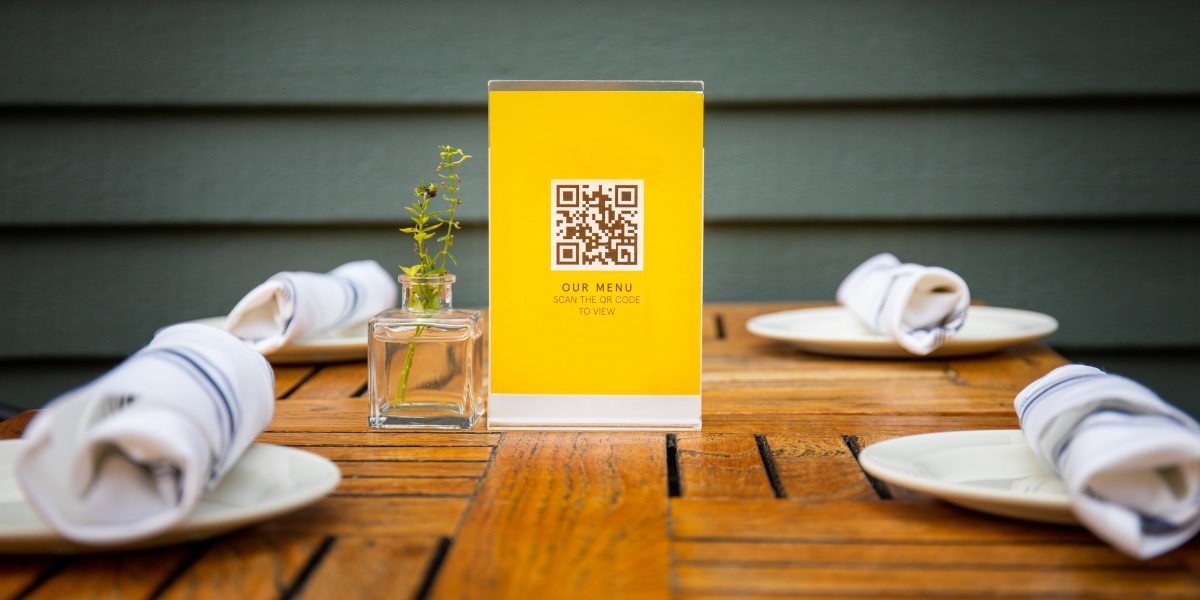Covid-19 drove fresh awareness and consumer take-up of QR technology in the UK, Europe and the US. And it’s a wave of interest that is opening opportunities for Facilities Managers to streamline their operations in new and cost-effective ways.
In the 2000s QRs took Asia by storm - but left the West cold
Excuse the pun - but QR codes have a checkered history in the UK and USA.
First created in Japan in 1994, QR codes quickly became part of the everyday digital landscape across much of Asia. In some countries, they have been splashed across billboards and TV commercials for years - integrated into every part of life from marketing to mobile payments. It’s a surprising fact that cashless payments through QR codes now represent 68% of all in-store transactions in China.
In the West, QRs grew in walled gardens…
But in the West, it’s been a different story. Although they are used extensively in logistics and integrated into many travel and ticketing products, they have not been widely embraced by consumers outside the walled gardens of certain apps.
Even though Apple finally incorporated a QR scanner into their native camera app in 2017, many thought this addition too little too late to really drive consumer take-up in Western markets to match the Asian model.
How Covid saved the QR Code from extinction
Then Covid happened and QRs found a new lease of life in the UK. Suddenly, every building open to the public was required to display a QR to support mandatory track and trace operations. It was a crash course for both businesses and consumers in the use and application of QRs.
And when UK punters arrived at newly socially-distanced pubs and found they could simply scan a QR and have beer delivered straight to their table - they truly embraced the technology after years of suspicion.
QR codes have finally gone mainstream
In 2015, Stastistica said that only 5% of European phone owners had used a QR code. In 2021 almost two thirds or (60%) had used a QR code in the last week or month.
And all this is great news for Facilities Managers who want their teams and businesses to find more frictionless ways to interact and digitise their processes. They’re finding QR can face down some of the principal obstacles to getting workers to use CAFM through:
- Raising work orders digitally
- Reporting engineer time and attendance
- Digitally track assets
And right now, they’re increasing the speed and efficiency of everyday FM transactions:
- Logging into FM software via mobile
- Dealing with log-ins and passwords
- Tagging equipment
- Searching and updating asset records
Three ways businesses can use QR codes for frictionless Facilities Management
1. Raising work orders
Busy workers need a way of reporting facility issues quickly. They don’t want to get bogged down with log ins and passwords if they can help it. QR presents a simple solution to one of the most persistent obstacles to engagement with FM software, just letting FM know there’s a problem in the first place:
Watch our FM QR demo:
2. Reporting time and attendance
Heard the one about the contractor who charged for time on site but never actually visited? Businesses need data they can trust if they’re going to maximise value from their suppliers. We know big contractors often won’t play ball when businesses ask them to use their FM software to log their time, but owning trustworthy attendance data can make the difference between compliance and non-compliance, efficiency and waste. QR is a simple answer to that complex problem. As Josh Greibach explains, a single QR scan can be all that it takes for a contractor to log their presence and supply you with the vital information you need:
“Contractors should be able to scan a QR code, click a single button to check-in and then scan a QR code to check out. It should be as simple as that. Set up systems like this and Without even realizing it, they'll have given you all the time and attendance records you need, and a chunk of really great, good quality data”
Josh Greibach at Expansive FM.
3. Asset management
With QR codes there’s no need to use expensive NFC tags and IoT technologies for asset tagging. With the right FM software businesses can easily and cheaply generate unique QR codes to print out and attach to equipment. With these in place teams can simply scan a QR to confirm they have inspected or serviced an asset; while instantly updating compliance records as they do so. You’ll also have a way to control the rise of Zombie and Ghost Assets that won’t be a major expense and technical challenge to maintain.
Covid raised the profile of QR codes amongst the general public and arguably saved the technology from extinction as a consumer tool. Now the tech is widely understood with scanning capabilities built into nearly every phone’s camera. At the same time, QR codes are cheap and simple to generate. They represent an opportunity for more frictionless engagement in many parts of the FM chain, in a way that’s scalable and straightforward to manage and implement.
.png?width=680&height=700&name=Ai%20page%20module%20(2).png)



